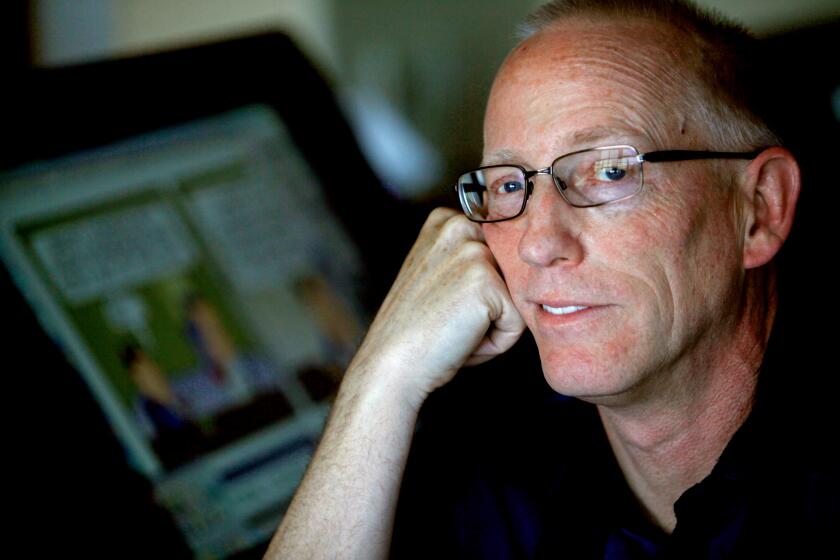Pickles, slaw, pastrami on rye: Skirball serves up a tasty show on the Jewish deli
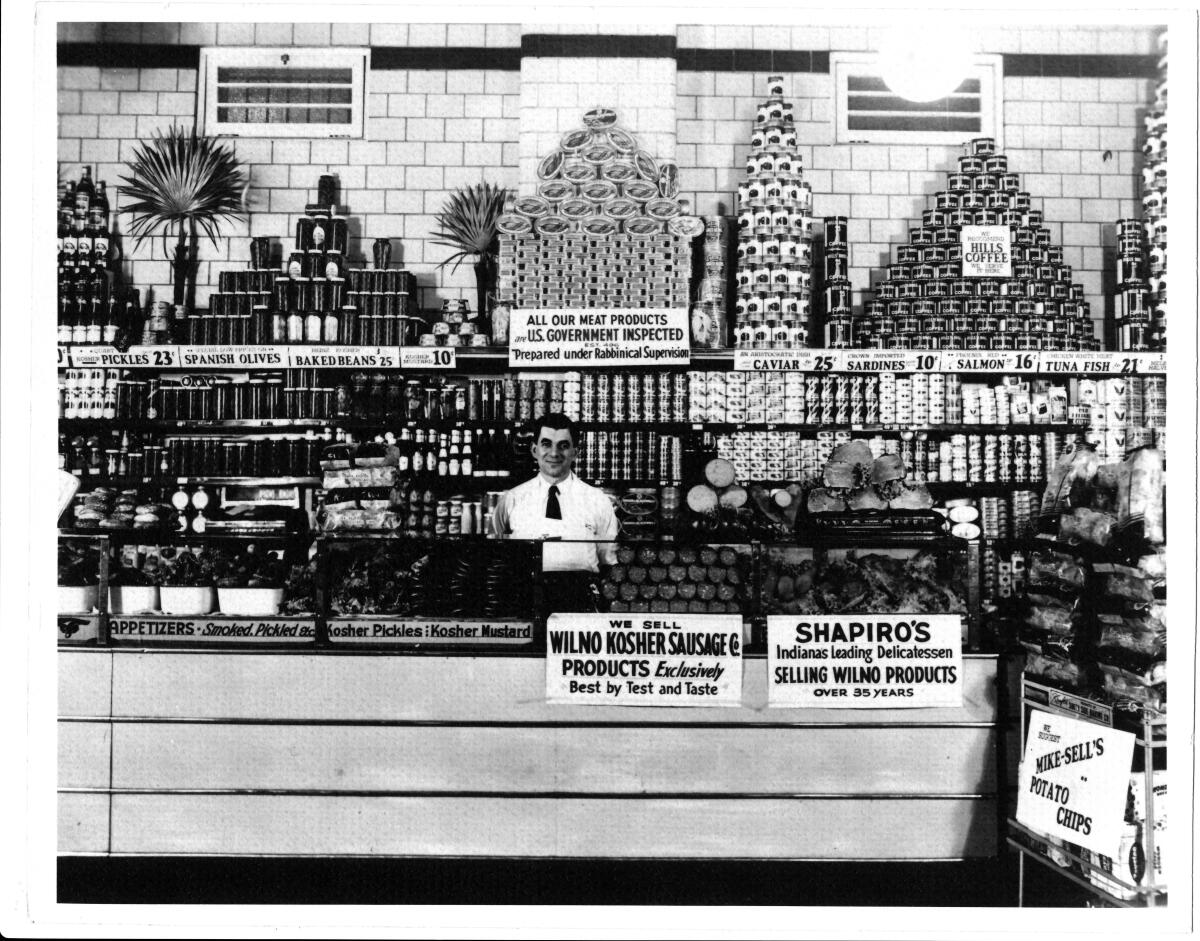
- Share via
Writer and scholar Lara Rabinovitch would surely admit to a fondness for Jewish delis and particularly for Langer’s Delicatessen. It was at Langer’s that her future husband, who has been known to quip she has a PhD in pastrami, proposed to her 11 years ago. Indeed, her engagement ring was brought out on a plate with a Langer’s No. 19 sandwich — pastrami with coleslaw, Russian-style dressing and Swiss cheese — as other patrons applauded.
Today a specialist in food, restaurant culture and immigrant history, Rabinovitch was a natural to co-curate “I’ll Have What She’s Having: The Jewish Deli,” opening Thursday at the Skirball Cultural Center in L.A. and on view until Sept. 4. Illuminating how immigrants to America brought their food tastes with them, exhibition fare ranges from early film footage of New York City street peddlers selling pickles from barrels to photos of deli staff welcoming such diners as Elvis Presley and Barack Obama.
“The story of American cuisine is the story of immigrant adaptation,” Rabinovitch said. “The Jewish deli within that narrative is a restaurant culture brought here from Eastern and Central Europe and expanded to become mainstream in American life. It has gone from being a humble Jewish cuisine to being an important part of American culture.”
Skirball curators Laura Mart and Cate Thurston, who first came up with the idea of an exhibition on the Jewish deli one day over lunch, teamed with Rabinovitch to investigate Jewish, immigration and food archives and collections as well as deli history. The results fill a large museum gallery with mid-20th century menus, matchbooks and uniforms worn by counter clerks and waitresses. There are very realistic replicas of matzo ball soup, corned beef sandwiches and other comfort food, not to mention a seven-minute, 20-second video of a smiling cook who narrates the making of a bagel.

The exhibition’s installations also include oversize images from a prominent 1960s New York City advertising campaign, long ubiquitous in the city’s subways and elsewhere. Posters read, “You Don’t Have to be Jewish to Love Levy’s Real Jewish Rye,” and feature satisfied-looking Levy’s Real Jewish Rye patrons including a Native American and a Black child.
The Levy’s ad campaign highlights another exhibition feature: the range of deli clientele. There’s a section on Broadway actors, writers and comedians as frequent patrons. Another exhibition wall asks, “Who’s at the table?” and answers with photos of prominent politicians and others.
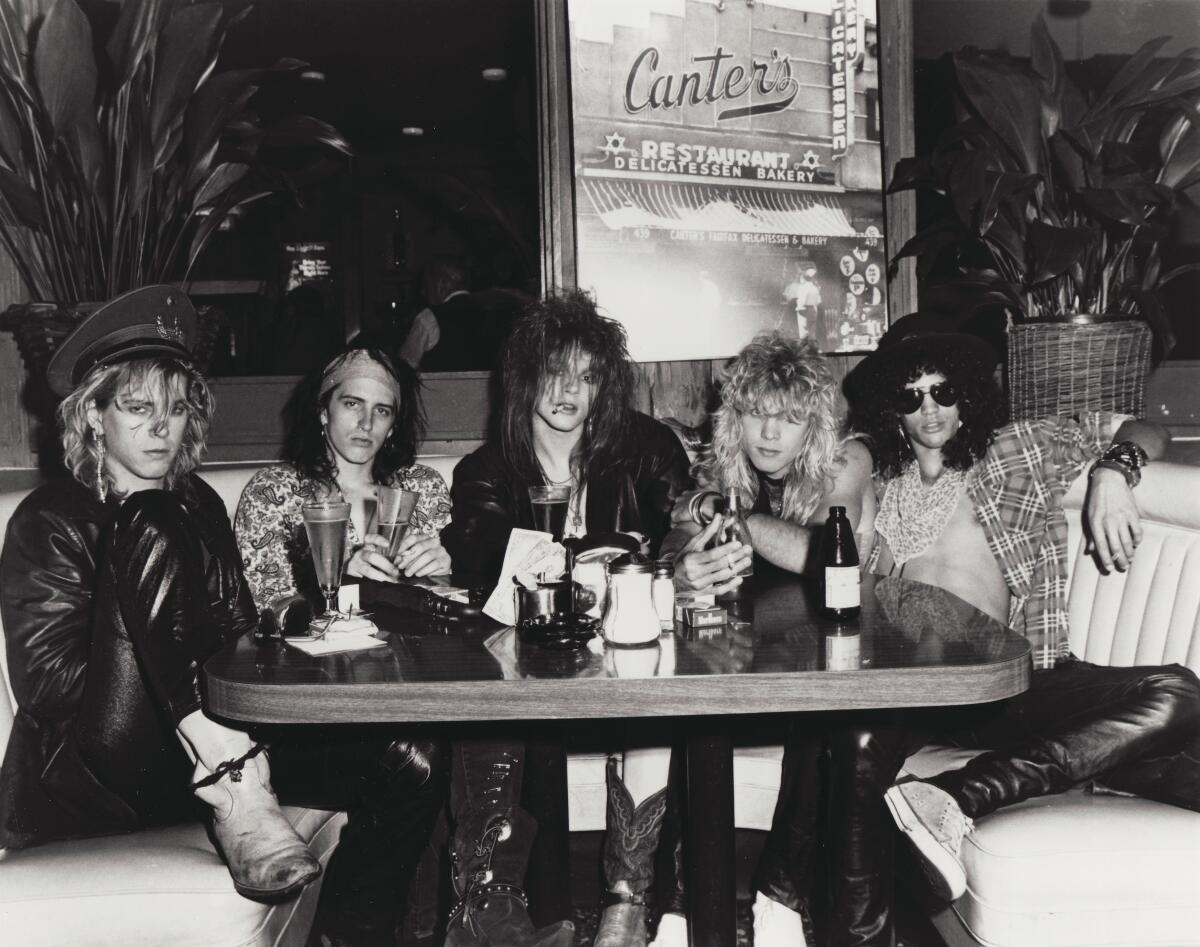
Monitors feature television and film clips that highlight the deli’s role on-screen. Besides screenwriter Nora Ephron’s 1989 film “When Harry Met Sally...” — whose showstopper deli scene with Meg Ryan and Billy Crystal gave the exhibition its title — clips also appear from TV shows including “Seinfeld,” “Curb Your Enthusiasm” and “The Marvelous Mrs. Maisel.”
The curators did a lot of eating, and Mart noted that they met at Langer’s for their “grand kickoff.” “We ordered almost everything,” she said. “The No. 19 on rye. Some of their homemade cream soda. Delicious pickles. A whitefish platter.” Interjected Thurston: “I think we had to take naps afterwards.”
What food did they like best? “It’s hard to say,” Mart said. “It’s like choosing a favorite child. I think we can say that we tasted a lot of incredible dishes, but it would be hard to choose a best dish. I usually ordered a pastrami sandwich or matzo ball soup, and if I was feeling ambitious, both of them.”
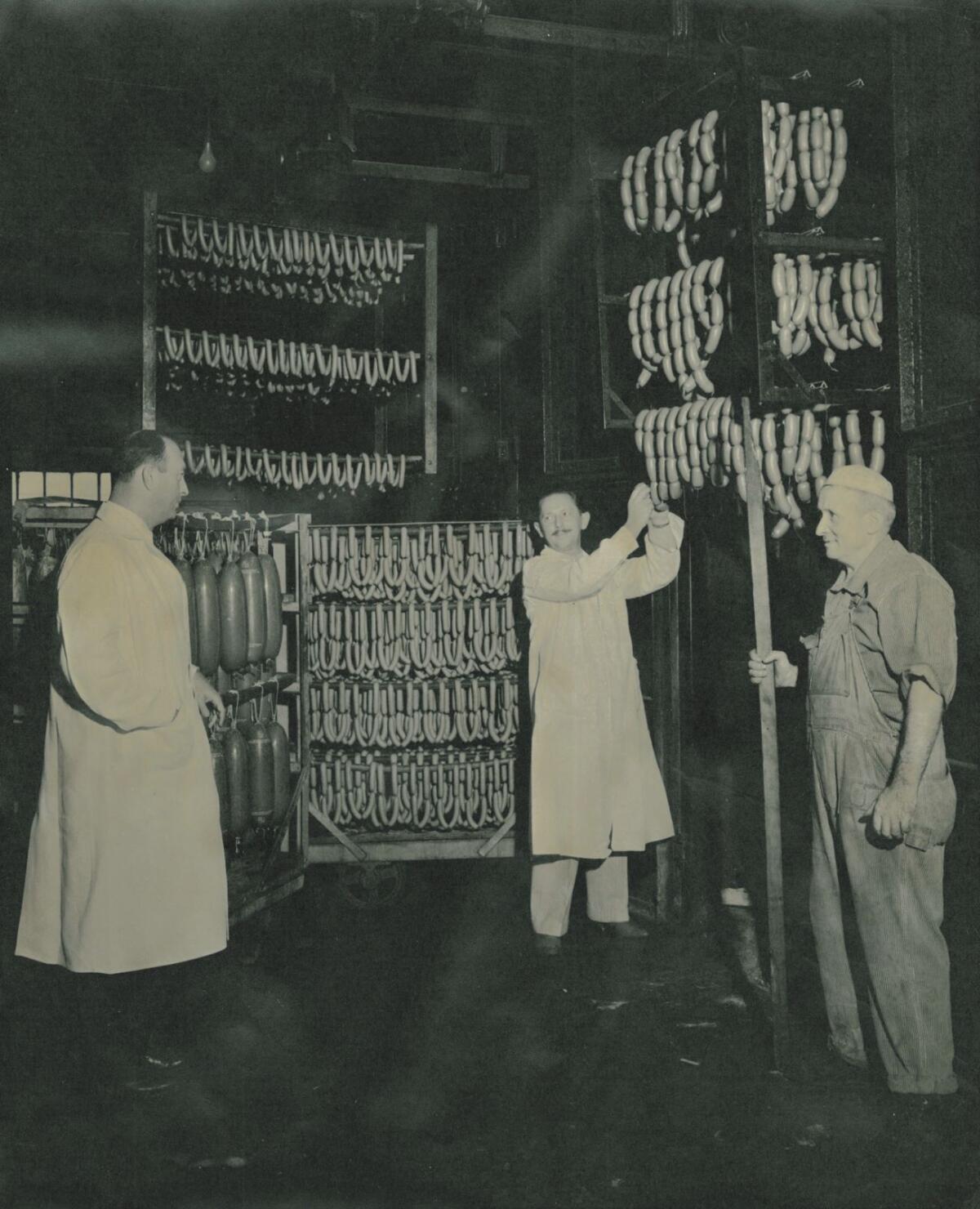
One thing they didn’t plan for was the COVID-19 pandemic. They began working on the show in 2017 and had begun installation at the Skirball in March 2020. “Some of the walls were installed, and we were about a week away from installing objects,” Thurston said. “It was like we pressed pause.”
The gallery stayed little changed for a long time, she said, and they then revamped the exhibition “maybe six times.”
“One of the delis that we were planning to feature — the Beetroot Deli in Portland [Ore.] — closed during the pandemic, and many others closed temporarily. We had to make modifications for flow and all of the different stages of social distancing. We were just pivoting, being nimble and waiting for the Skirball to reopen. And now the day is finally here.”
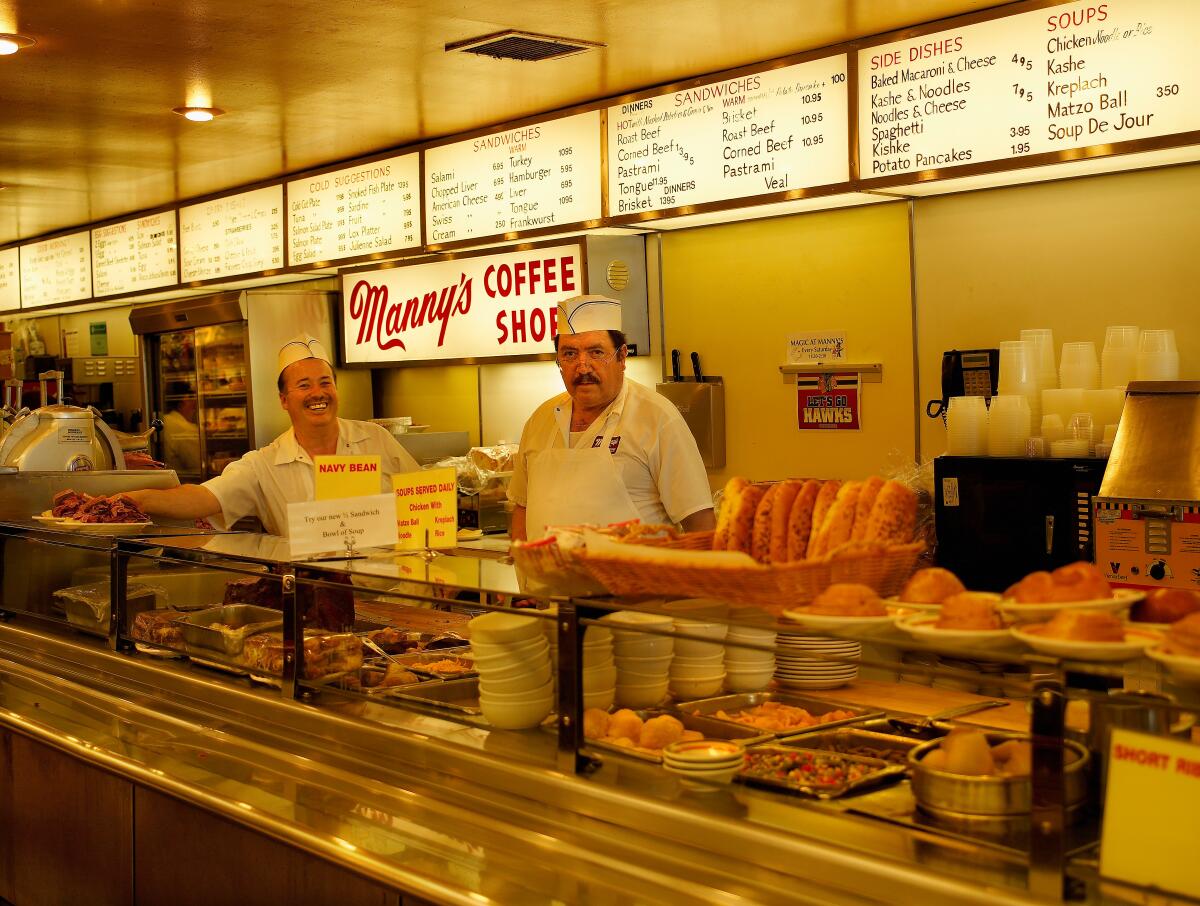
'I'll Have What She's Having: The Jewish Deli'
Where: Skirball Cultural Center, 2701 N. Sepulveda Blvd., L.A.
When: Thursday-Sept. 4; closed Mondays
Admission: This is a special exhibition with timed-entry reservations required. Tickets are $13-$18 (includes general admission to the center); children 2 and younger are free. Admission is free for all every Thursday.
COVID-19 protocols: Details at skirball.org/ticketing-and-safety
Info: (310) 440-4500
More to Read
The biggest entertainment stories
Get our big stories about Hollywood, film, television, music, arts, culture and more right in your inbox as soon as they publish.
You may occasionally receive promotional content from the Los Angeles Times.










